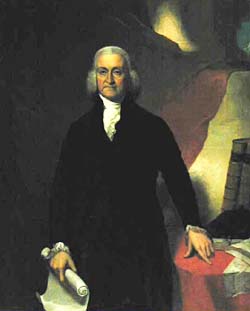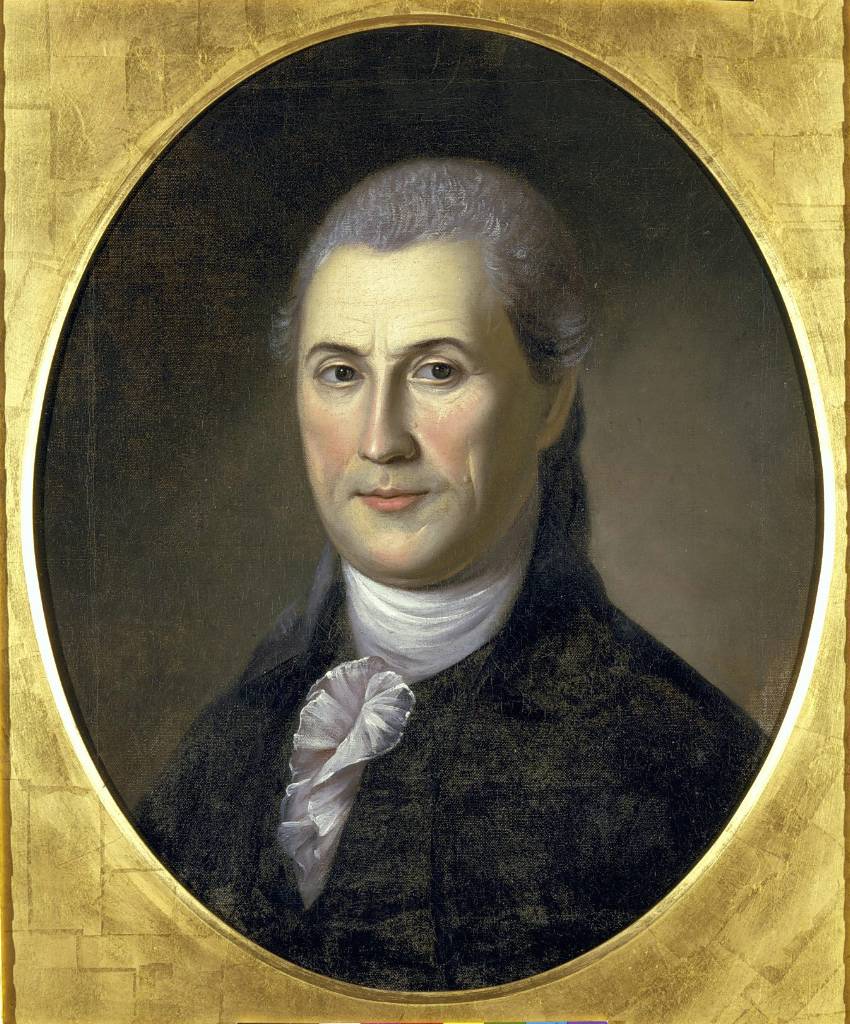|
William Thomas Minor
William Thomas Minor (October 3, 1815 – October 13, 1889) was an American judge and politician from Connecticut. He served as the 39th Governor of Connecticut, Consul-General to Havana, Cuba and judge on the Connecticut Superior Court. Biography Minor was born in Stamford, Fairfield County, Connecticut, on October 3, 1815, to Simeon Hinman Minor and Catherine Lockwood Minor. He studied at Yale University and graduated in 1834. Minor taught school for five years while he studied law under his father, a former Connecticut legislator. Career In 1840, Minor was admitted to the bar and began the practice of law in Stamford. Minor became a member of the Connecticut House of Representatives in 1841, and served in that position until 1848. He was a judge for the Fairfield County, Connecticut Court. He married Mary Catherine Leeds on April 16, 1849, and they had five children. He became a member of the Connecticut State Senate representing the 12th District in 1854. As candida ... [...More Info...] [...Related Items...] OR: [Wikipedia] [Google] [Baidu] |
William Field (American Politician)
William Field (April 12, 1790 – September 20, 1878) was an American politician who was the 46th lieutenant governor of Connecticut from 1855 to 1856. Early life Field was born on April 12, 1790 in Pomfret, Connecticut, to William Field and Lydia Colwell. He was descended from Roger Williams, the founder of Rhode Island on his maternal side. In his early life Field worked at forging machinery. He served in the U.S. military during the War of 1812 in a New London, Connecticut, company. He married Martha Pinney in 1820; they had five children and resided in Stafford, Connecticut. Her death in 1835 left him a widower. Political career In 1835, Field was nominated on the Jacksonian Democrat ticket to the office of Connecticut state comptroller. He was elected and served from 1836-1838. He was elected a member of Connecticut state senate, representing the 14th District from 1849-50. In 1855, Field was elected Lieutenant Governor of Connecticut as a Free Soil Party candidate. Fie ... [...More Info...] [...Related Items...] OR: [Wikipedia] [Google] [Baidu] |
List Of Governors Of Connecticut
The governor of Connecticut is the head of government of Connecticut, and the commander-in-chief of the state's military forces. The governor has a duty to enforce state laws, and the power to either approve or veto bills passed by the Connecticut General Assembly and to convene the legislature. Unusual among U.S. governors, the Governor of Connecticut has no power to pardon. The Governor of Connecticut is automatically a member of the state's Bonding Commission. He is an ex-officio member of the board of trustees of the University of Connecticut and Yale University. There have been 69 post-Revolution governors of the state, serving 73 distinct spans in office. Four have served non-consecutive terms: Henry W. Edwards, James E. English, Marshall Jewell, and Raymond E. Baldwin. The longest terms in office were in the state's early years, when four governors were elected to nine or more one-year terms. The longest was that of the first governor, Jonathan Trumbull, who served over ... [...More Info...] [...Related Items...] OR: [Wikipedia] [Google] [Baidu] |
Abraham Lincoln
Abraham Lincoln ( ; February 12, 1809 – April 15, 1865) was an American lawyer, politician, and statesman who served as the 16th president of the United States from 1861 until his assassination in 1865. Lincoln led the nation through the American Civil War and succeeded in preserving the Union, abolishing slavery, bolstering the federal government, and modernizing the U.S. economy. Lincoln was born into poverty in a log cabin in Kentucky and was raised on the frontier, primarily in Indiana. He was self-educated and became a lawyer, Whig Party leader, Illinois state legislator, and U.S. Congressman from Illinois. In 1849, he returned to his successful law practice in central Illinois. In 1854, he was angered by the Kansas–Nebraska Act, which opened the territories to slavery, and he re-entered politics. He soon became a leader of the new Republican Party. He reached a national audience in the 1858 Senate campaign debates against Stephen A. Douglas. ... [...More Info...] [...Related Items...] OR: [Wikipedia] [Google] [Baidu] |
Republican National Convention
The Republican National Convention (RNC) is a series of presidential nominating conventions held every four years since 1856 by the United States Republican Party. They are administered by the Republican National Committee. The goal of the Republican National Convention is to officially nominate and confirm a candidate for president and vice president, adopt a comprehensive party platform and unify the party, as well as publicize and launch the fall campaign. Delegates from all fifty U.S. states and from American dependencies and territories such as Puerto Rico and the Virgin Islands attend the convention and cast their votes. Like the Democratic National Convention, the Republican National Convention marks the formal end of the primary election period and the start of the general election season. In 2020 all parties replaced the usual conventions with short online programs. Delegations The party's presidential nominee is chosen primarily by pledged delegates, which are in turn ... [...More Info...] [...Related Items...] OR: [Wikipedia] [Google] [Baidu] |
1856 Connecticut Gubernatorial Election
The 1856 Connecticut gubernatorial election was held on April 7, 1856. Incumbent governor and American Party nominee William T. Minor defeated former congressman and Democratic nominee Samuel Ingham and former Comptroller of Connecticut and Republican nominee Gideon Welles with 38.99% of the vote. In accordance with the national transition from the Second Party System to the Third Party System, this was the first such election in which the Republicans fielded a candidate, the last in which the Know-Nothings would run (and win), and the last in which the Whig Party participated. Although Ingham won a strong plurality of the vote, he fell just short of a majority. As a result, the Connecticut General Assembly elected the governor, per the state constitution. Minor won the vote over Ingham, 135 to 116, in the General Assembly, and became the governor. This was the second election in which Ingham would receive a plurality of more than 10% and still lose, the first being 1854. ... [...More Info...] [...Related Items...] OR: [Wikipedia] [Google] [Baidu] |
Connecticut General Assembly
The Connecticut General Assembly (CGA) is the state legislature of the U.S. state of Connecticut. It is a bicameral body composed of the 151-member House of Representatives and the 36-member Senate. It meets in the state capital, Hartford. There are no term limits for either chamber. During even-numbered years, the General Assembly is in session from February to May. In odd-numbered years, when the state budget is completed, session lasts from January to June. The governor has the right to call for a special session after the end of the regular session, while the General Assembly can call for a " veto session" after the close in order to override gubernatorial vetoes. During the first half of session, the House and Senate typically meet on Wednesdays only, though by the end of the session, they meet daily due to increased workload and deadlines. History The three settlements that would become Connecticut (Hartford, Wethersfield, and Windsor) were established in 1633, and ... [...More Info...] [...Related Items...] OR: [Wikipedia] [Google] [Baidu] |
Samuel Ingham
Samuel Ingham (September 5, 1793 – November 10, 1881) was a two-term Congressman from Connecticut. He is not to be confused with the former Secretary of the Treasury Samuel D. Ingham. He was born in Hebron, Connecticut, Hebron on September 5, 1793. He attended the common schools in Vermont, studied law with John Mattocks and Sylvester Gilbert, was admitted to the bar and commenced practice in Canaan, Vermont. He moved to Jewett City, Connecticut and in 1819, to Essex, Connecticut, Essex (then part of Saybrook, Connecticut, Saybrook), Connecticut, and continued the practice of his profession. He served as State's attorney for Middlesex County, Connecticut, Middlesex County, and was a member of the Connecticut House of Representatives (serving as speaker in 1833, 1835 and 1851). He served as judge of probate judge of the Middlesex County Court. Ingham was elected as a Jacksonian Party (United States), Jacksonian to the Twenty-fourth Congress and reelected as a Democratic ... [...More Info...] [...Related Items...] OR: [Wikipedia] [Google] [Baidu] |
Governor Of Connecticut
The governor of Connecticut is the head of government of Connecticut, and the commander-in-chief of the state's military forces. The governor has a duty to enforce state laws, and the power to either approve or veto bills passed by the Connecticut General Assembly and to convene the legislature. Unusual among U.S. governors, the Governor of Connecticut has no power to pardon. The Governor of Connecticut is automatically a member of the state's Bonding Commission. He is an ex-officio member of the board of trustees of the University of Connecticut and Yale University. There have been 69 post-Revolution governors of the state, serving 73 distinct spans in office. Four have served non-consecutive terms: Henry W. Edwards, James E. English, Marshall Jewell, and Raymond E. Baldwin. The longest terms in office were in the state's early years, when four governors were elected to nine or more one-year terms. The longest was that of the first governor, Jonathan Trumbull, who served ov ... [...More Info...] [...Related Items...] OR: [Wikipedia] [Google] [Baidu] |
Connecticut State Senate
The Connecticut State Senate is the upper house of the Connecticut General Assembly, the state legislature of the U.S. state of Connecticut. The state senate comprises 36 members, each representing a district with around 99,280 inhabitants. Senators are elected to two-year terms without term limits. The Connecticut State Senate is one of 14 state legislative upper houses whose members serve two-year terms; four-year terms are more common. As in other upper houses of state and territorial legislatures and the federal U.S. Senate, the Senate is reserved with special functions such as confirming or rejecting gubernatorial appointments to the state's executive departments, the state cabinet, commissions and boards. Unlike a majority of U.S. state legislatures, both the Connecticut House of Representatives and the State Senate vote on the composition to the Connecticut Supreme Court. The Senate meets within the State Capitol in Hartford. History The Senate has its basis in the earl ... [...More Info...] [...Related Items...] OR: [Wikipedia] [Google] [Baidu] |
Practice Of Law
In its most general sense, the practice of law involves giving legal advice to clients, drafting legal documents for clients, and representing clients in legal negotiations and court proceedings such as lawsuits, and is applied to the professional services of a lawyer or attorney at law, barrister, solicitor, or civil law notary. However, there is a substantial amount of overlap between the practice of law and various other professions where clients are represented by agents. These professions include real estate, banking, accounting, and insurance. Moreover, a growing number of legal document assistants (LDAs) are offering services which have traditionally been offered only by lawyers and their employee paralegals. Many documents may now be created by computer-assisted drafting libraries, where the clients are asked a series of questions that are posed by the software in order to construct the legal documents. In addition, regulatory consulting firms also provide adv ... [...More Info...] [...Related Items...] OR: [Wikipedia] [Google] [Baidu] |
Admission To The Bar In The United States
Admission to the bar in the United States is the granting of permission by a particular court system to a lawyer to practice law in the jurisdiction and before those courts. Each U.S. state and similar jurisdiction (e.g. territories under federal control) has its own court system and sets its own rules for bar admission, which can lead to different admission standards among states. In most cases, a person is "admitted" or "called" to the bar of the highest court in the jurisdiction and is thereby authorized to practice law in the jurisdiction. Federal courts, although often overlapping in admission standards with states, set their own requirements for practice in each of those courts. Typically, lawyers seeking admission to the bar of one of the U.S. states must earn a Juris Doctor degree from a law school approved by the jurisdiction, pass a bar exam administered by the regulating authority of that jurisdiction, pass a professional responsibility examination, and undergo ... [...More Info...] [...Related Items...] OR: [Wikipedia] [Google] [Baidu] |
Fairfield County, Connecticut
Fairfield County is a County (United States), county in the southwestern corner of the U.S. state of Connecticut. It is the List of counties in Connecticut, most populous county in the state and was also its fastest-growing from 2010 to 2020. As of the 2020 United States census, 2020 census, the county's population was 957,419, representing 26.6% of Connecticut's overall population. The closest to the center of the New York metropolitan area, the county contains four of the state's top 7 largest cities—Bridgeport, Connecticut, Bridgeport (1st), Stamford, Connecticut, Stamford (2nd), Norwalk, Connecticut, Norwalk (6th), and Danbury, Connecticut, Danbury (7th)—whose combined population of 433,368 is nearly half the county's total population. The United States Office of Management and Budget has designated Fairfield County as the Greater Bridgeport, Bridgeport-Stamford-Norwalk-Danbury metropolitan statistical area. The United States Census Bureau ranked the metropolitan area a ... [...More Info...] [...Related Items...] OR: [Wikipedia] [Google] [Baidu] |





